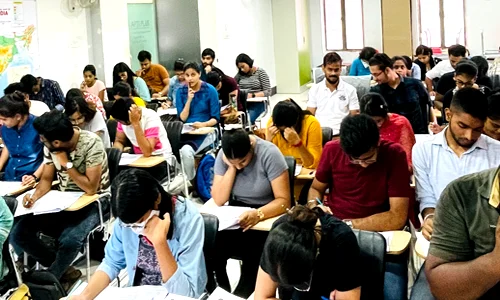



China’s dominance in REE processing creates a major strategic risk for green tech and defense. With Beijing able to weaponize supplies, countries are turning to friend-shoring through the MSP. India is reforming mining laws and strengthening KABIL to cut dependence and secure long-term strategic and industrial autonomy.
Click to View MoreThe U.S.-China rivalry over trade, technology, and tariffs forces India to balance strategic autonomy with economic opportunity. Leveraging the “China Plus One” shift, India can attract FDI and diversify supply chains while advancing Atmanirbhar Bharat and the Quad to anchor its role in a multipolar world.
Click to View MoreIndia aims for 500 GW renewable capacity by 2030 and net-zero by 2070, relying on critical minerals like lithium and cobalt. To reduce import dependence, it launched the National Critical Minerals Mission, promoting domestic mining, recycling, circular economy, and public-private partnerships for energy self-reliance.
Click to View MoreRare Earth Elements (REEs) are 17 vital metals used in modern technologies like electronics, renewable energy, and defense systems. Although India holds significant reserves, it depends heavily on imports—mainly from China, which dominates global production and processing. The ongoing trade tensions have highlighted India’s need for self-reliance in critical minerals. To address this, the government has launched initiatives such as the National Critical Minerals Mission, policy reforms under the MMDR Act, and incentives for refining, recycling, and magnet manufacturing. Strengthening domestic capacity, fostering international collaborations, and ensuring sustainable extraction are key to making India a global player in the rare earth sector.
Click to View MoreChina’s export restrictions on rare earth elements, affecting global defense, semiconductor, and green energy sectors. India must urgently build domestic processing capacity and secure resilient supply chains to protect its strategic autonomy, economic security, and technological independence.
Click to View MoreIndia’s new policy exempts critical and atomic mineral mining projects from mandatory public hearings, aiming to fast-track approvals for defense, nuclear, and renewable sectors. While prioritizing national security and strategic needs, it requires strong environmental and social impact assessments to balance rapid resource extraction with sustainable development goals.
Click to View More
© 2025 iasgyan. All right reserved